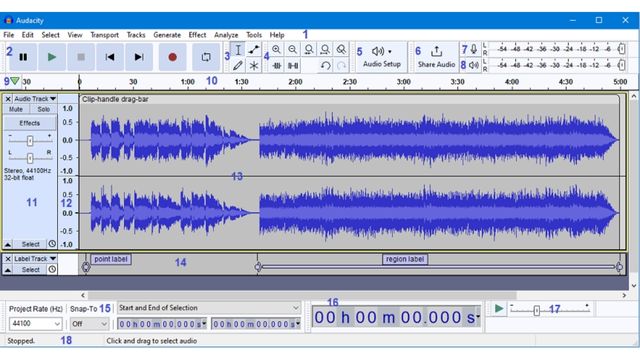Most good audio editors have some form of pitch correction built in. Even if they do not, there are usually useful plugins that allow you to shorten the distance between notes for pitch. Correction and stylistic novelty and innovation. While the terminology and functionality vary widely from app to app, here are some ways to achieve these effects in many popular audio editors apps.
Autotune is a much more flexible tool than you might think, and listeners often don’t even know it’s there. However, the usefulness of autotuning is undeniable, as it allows for simple and easy correction of “permanent” mistakes in vocal recordings.
Autotuners in audio editors software work by shortening the distance between notes, bringing slightly out-of-tune notes closer to tuning. In extreme cases, this shortening can create sliding sounds characteristic of certain genres.
Read Also: INTEL ARC A7 GPU REVIEW – CRITICS’ SCORES COMPILED
The important thing to remember about all auto tuners is that you cannot correct the pitch if you do not know the pitch. Finding this information is not difficult, and there are many tools online.
Alternatively, you can display the keyboard and find the tonic (the root note) by trial and error. However, it is common to have to re-enter this information each time you incorporate a new element, including plugins.
The same name does not always call autotuning tools. Some are built into the application, while many are compatible with VST plugins. Since this is a big topic, let’s look at how to use the Auto-Tune feature in your favorite music production software.
How to Use Auto-Tune in CyberLink AudioDirector
CyberLink AudioDirector has several ways to modify audio, but none are called Auto-Tune. You can work on multiple tracks or individually.

In the Adjustments window on the left side of the screen, select Adjust Audio. Next, choose from Pitch Shifter, Pitch Bender, and Speech Pitch Contour to fine-tune. The notes by displaying a movable curve in the selected area of the track.
You can also manually adjust beyond the preset using the Advanced (gear) menu to the right of the selected preset.
AudioDirector also has a handy preview toggle switch that appears directly below the controls in many effects and conversion panes. Making the editing pane more controllable. so it is super easy to ask if it is what you want before applying an effect.
An alternative tool for pitch correction can be found in the ‘Apply Effects’ section of the Adjustment window. From there, select ‘Voice Changer.’ Clicking on the gear icon next to the preset menu opens a pitch control slider for manually changing the pitch and several preset voices that can be adjusted.
How to use auto-tune audio in Audacity
Audacity itself does not include native autotune, but the increased VST capabilities make it easier to add one of the many autotune plugins. The best free option is GVST’s GSnap, where download options are available for Windows, Mac, and Linux.

Once downloaded, you must copy and paste the plugin into your Audacity plugin folder. This is somewhat easier on a PC than on a Mac; Mac users need to control-click on the Audacity icon in the Applications folder to bring up the necessary menu of “show package contents,” which is not obvious. This is not obvious.
No matter what platform you use, once installed, remember to activate the plugin first and restart Audacity.
Once that is done, there is much to play with. Click on ‘Presets and Settings’ to see the factory presets so you can experiment to your heart’s content.” Despite the homage to T-Pain in the title, “Share the Pain” is a fairly subtle tool, using a dial to narrow the spacing between notes to get that familiar sliding sound. While holding down the Control key, the default values are displayed.